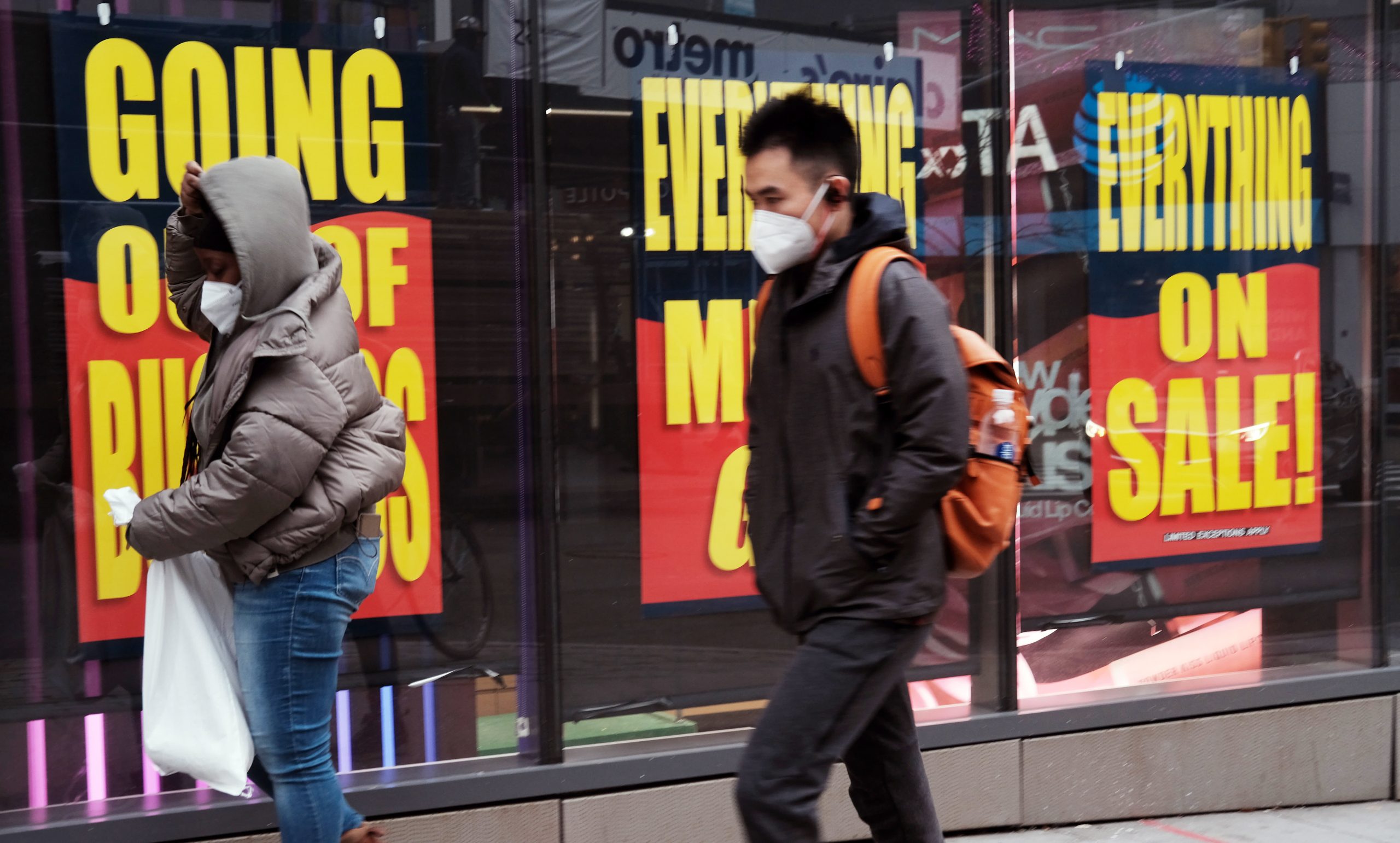
Nonfarm payrolls increased by just 245,000 in November, well below Wall Street estimates as rising coronavirus cases coincided with a considerable slowdown in hiring.
Economists surveyed by Dow Jones had been looking for 440,000 and the jobless rate to decrease to 6.7% from 6.9% in October.
The unemployment rate met expectations, though it fell along with a drop in the labor force participation rate to 61.5%. A more encompassing measure of joblessness edged lower to 12% while the number of Americans outside the labor force remains just above 100 million.
The November gain represented a pronounced slowdown from the 610,000 positions added in October.
In all, the economy has brought back 12.3 million of the 22 million jobs lost in the first two months of the crisis. There are still 10.7 million Americans considered unemployed, compared with 5.8 million in February.
The total of permanent job losers remained at 3.7 million in November, but is up 2.5 million from February.
At the pace added in November, the economy would not be back to pre-pandemic employment levels until 2024, according to Daniel Zhao, senior economist at job placement site Glassdoor.
“Today’s report is a firm reminder that we’re not out of the woods yet,” Zhao said. “Even with a vaccine on the horizon, many are bracing for a long winter ahead.”
The November job gains would be considered strong under normal circumstances, but the pandemic has left millions of Americans out of work from jobs lost in the early stages of the crisis. The total represents the slowest job growth since the employment recovery began in May as the number of workers unemployed for at least 25 weeks surged 11% to nearly 4 million.
“Overall, it is a disappointing report,” economists at Jefferies said in a note. “With COVID cases surging again and policies being put in place to try and slow the spread, hiring has slowed down. Also, worker availability is a significant limiting factor as well, with many unable to go to work due to COVID concerns or family care obligations.”
Despite the disappointing number, markets showed little reaction, with Wall Street expecting a higher open.
Job gains came from transportation and warehousing, which rose by 145,000 thanks to a jump in couriers and messengers as well as warehousing and storage.
Professional and business services added 60,000 and health care was up 46,000. The battered hospitality industry, which has taken the worst of the job losses during the pandemic, increased just 31,000, while retail lost 35,000 jobs, a potentially troubling sign heading into the holiday shopping season.
General merchandise stores dropped 21,000, while sporting goods, hobby, book and music stores declined by 12,000. Electronics and appliance stores were down by 11,000 while health and personal-care stores cut 8,000.
Overall, retail is down 550,000 employees from February, the month before the pandemic restrictions went into place.
Construction and manufacturing each added 27,000 jobs for the month, while financial activities rose 15,000.
Government hiring fell for the third straight month, down 99,000 primarily due to the loss of Census workers hired for the 2020 count.
The numbers come amid a new spike in coronavirus cases that threatens to push the U.S. health-care system to the brink. More than 100,000 people are hospitalized across the U.S. due to the accelerated outbreak, which saw 210,161 new cases Thursday, according to the COVID Tracking Project overseen by journalists at The Atlantic.
Though the U.S. is coming off its fastest growth quarter ever, economists worry that the next quarter or two could see flat or even negative growth before rebounding strongly in the latter part of 2021.


 Signal2forex.com - Best Forex robots and signals
Signal2forex.com - Best Forex robots and signals




